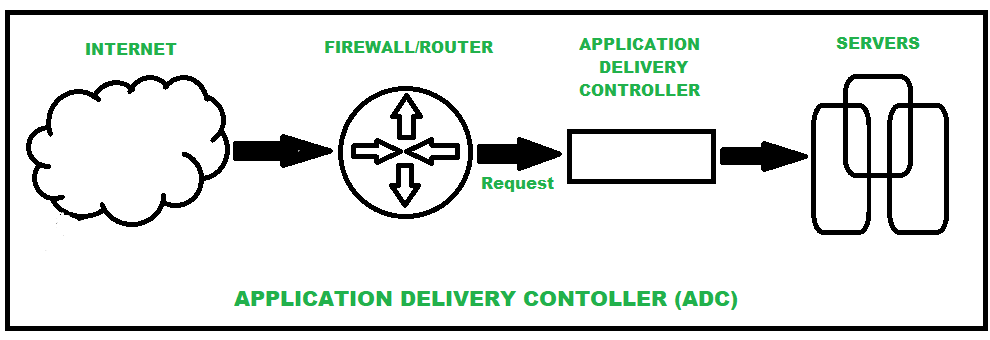Overview of Application Delivery Controller (ADC)
Last Updated :
05 May, 2021
Application Delivery Controllers (ADC) are considered as the next generation of load balancers and more often as a part of Application Delivery Network (ADN) which are placed in a data center between the firewall and web/application server. By removing more loads on the servers it makes the application delivery process more flexible and reliable. It tends to offer more advanced features like content forwarding as well as server health monitoring.
Application Delivery Controller (ADC) :
Application Delivery Controller (ADC) the name itself defines what it is. When the use of software application have been increased a lot over the years similarly bringing an application and providing the service to the user is what the ‘Delivery’ means. Application Delivery Controllers are the new generation networking appliances based on advanced technologies and practices just to manage application delivery requirements and controlling communications between clients and application servers to deliver improved application services. So in simple, it is placed in a data center and between the firewall and application servers requests and response and more focus to availability, acceleration, performance, security and resiliency of applications delivered over the internet.
Most common features of ADC :
Working of ADC :
Application Delivery Controller (ADC) which is placed in a data center and always tries to ensure the high performance of software applications delivered over the internet. Multiple tasks it performance with an aim of delivering better services to the end customers. It works a lot focusing major areas which are responsible for delivering better performance of a software application. Like
- It performs load balancing
- Caching
- It provides security by 3A principle (Authentication, Authorization and Availability)
- Multiplexing
- Content switching etc.
To perform all these actions ADC uses multiple techniques in it.
The below figure represents an Application Delivery Controller

Techniques used by ADC to enhance performance :
These four techniques are considered as the common technique used by ADC to enhance the performance.
- Load Balancing –
It refers to reduce load on server by distributing incoming requests across multiple group of servers.
- Caching –
It refers to store some content locally in ADC rather fetching from server always for every request.
- Compression –
It refers to compressing the static assets like images, music, and video files etc. before transferring on the network.
- Offloading of SSL processing –
It refers to do decryption of requests and encryption of responses that needs to be performed by server.
Services of Application Delivery Controller :
- Server Load Balancing
- SSL offloading
- DNS APPLICATION FIREWALL
- Central Authentication
- Web Application Firewall
- DDoS Protection
- Multi-Tenancy Support
Application Delivery Control Tool :
Application connection control technologies are typically found at network endpoints and are distinguished by their respective CPUs. They deploy a suite of optimization techniques to improve online application rendering and use of real-time data to prioritize access and applications. The technologies once deployed constitute an Application Delivery Network (ADN). Application Delivery Controllers and WAN Optimization Controllers (WOC) are the two components that comprise Application Delivery Networks.
ADC is considered as a part of Application Delivery Network (ADN) as it is located at the end of ADN and the WOC which is located in the data center focuses on improving latency, improving application performance, and also deals with compression, buffering, protocol spoofing, and de-copying etc. Although ADN is sometimes called a Content Delivery Network (CDN), ADNs improve dynamic content acceleration while CDNs focus on static content.
Advantages of ADC :
- ADC helps in providing improved application performance.
- ADC can use various technologies for better advancement in providing service.
- ADC can handle both encrypted and decrypted traffic. As well as it decrypts traffic before reaching at Server.
- ADC provides visibility into presented content and improves the delivery of image-intensive web pages .
Disadvantages of ADC :
The number of disadvantages is very few as compared to the advantages of ADC-
- Operators need to overlook ADC regularly.
- Requires upfront capital investment for ADC implementation.
- Lacks agility and distributed architecture, required in today’s dynamic environment.
- Professionals require ADC software knowledge to operate it.
Like Article
Suggest improvement
Share your thoughts in the comments
Please Login to comment...